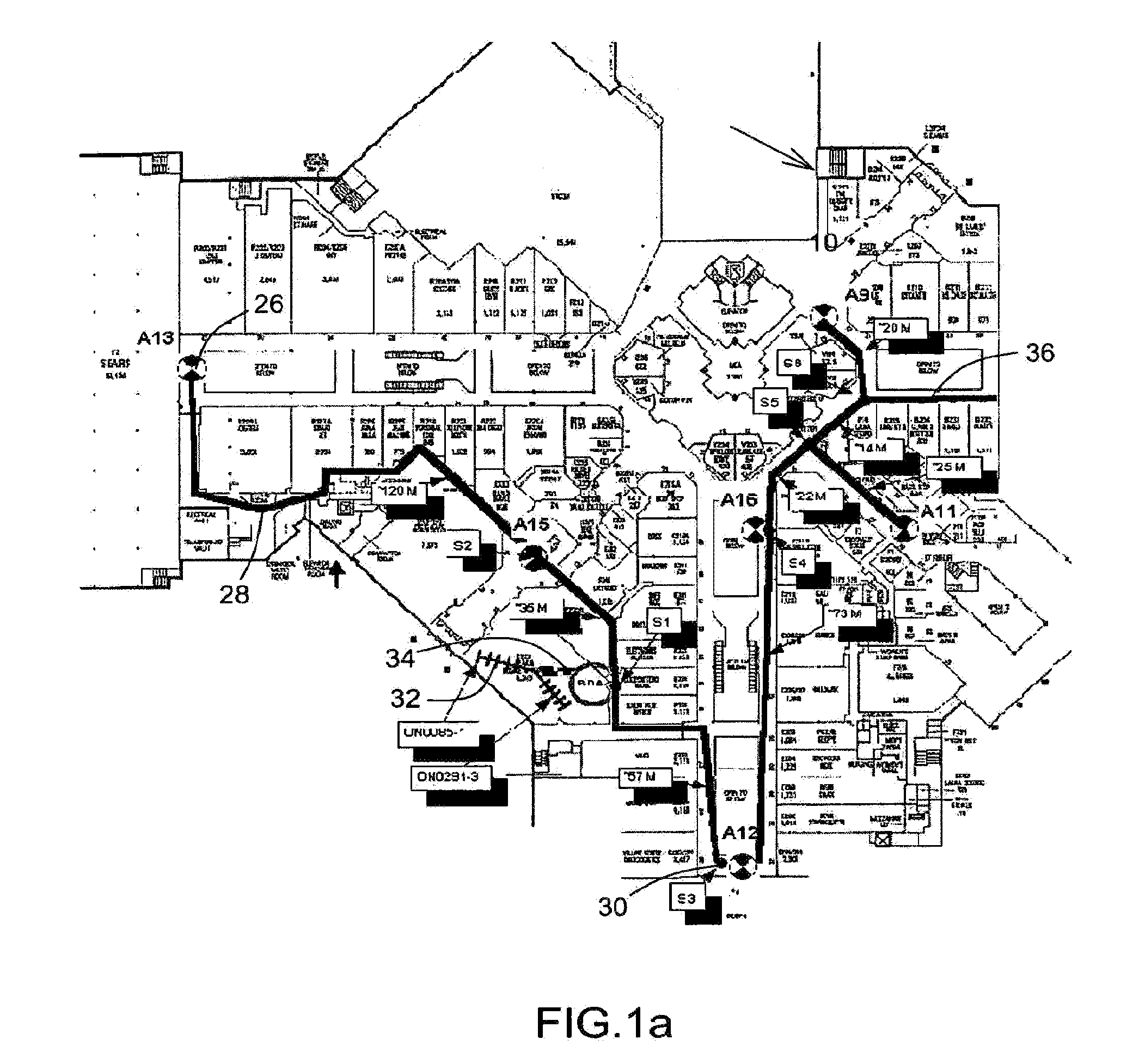Network design method and system therefor
- Summary
- Abstract
- Description
- Claims
- Application Information
AI Technical Summary
Benefits of technology
Problems solved by technology
Method used
Image
Examples
Embodiment Construction
[0062]A novel network design method and its associated computer system will be described hereinafter. Although the invention is described in terms of specific illustrative embodiments, it is to be understood that the embodiments described herein are by way of example only and that the scope of the invention is not intended to be limited thereby.
[0063]According to the preferred embodiment of the present invention, there is provided a computer-implemented method for creating a distributed antenna network (hereinafter “DAN”), as illustrated in FIG. 1, for use in designing preferably but not exclusively in-building wireless communications network.
[0064]The method of the present invention is understandably embodied in a software, stored on a computer-readable media which is run on a computer system. Computer systems are known in the art and therefore only the required computer devices will be recited. In any case, the skilled addressee will know which computer system and computer periphe...
PUM
 Login to View More
Login to View More Abstract
Description
Claims
Application Information
 Login to View More
Login to View More - R&D
- Intellectual Property
- Life Sciences
- Materials
- Tech Scout
- Unparalleled Data Quality
- Higher Quality Content
- 60% Fewer Hallucinations
Browse by: Latest US Patents, China's latest patents, Technical Efficacy Thesaurus, Application Domain, Technology Topic, Popular Technical Reports.
© 2025 PatSnap. All rights reserved.Legal|Privacy policy|Modern Slavery Act Transparency Statement|Sitemap|About US| Contact US: help@patsnap.com



